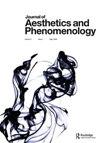Compression and Noise
IF 0.2
0 PHILOSOPHY
引用次数: 0
Abstract
ABSTRACT Compression is an essential technique used across diverse information systems, one in which supposedly redundant or superfluous information is minimized or eliminated in order to make the storage, transmission, or reception of other information more legible or efficient. Compression is involved in everything from computer data storage (encoding) and efficient computational processes (floating point arithmetic) to the formatting of media (telephony, radio, streaming) or the engineering and circulation of sound and image (dynamic compression of volume, jpeg resolution). Beyond any particular technical implementation, though, compression names the peculiar perceptual regime of late modernity—it is our percepteme, our episteme. As Galloway and LaRivière (2017) have noted—everything is compressed, from the logic of digital computers to our attention spans. Yet, if compression designates the essence of experience today, it is precisely in response to a complementary concept of noise. Noise is the lived affect of our material conditions which cannot be made significant to us: not only the literal acoustic noise of late modernity (the waste-product of technologies which hang over perceptual spaces like smog hangs over cities) but, perhaps more critically, compression emerges to cope with a new, properly “cognitive complexity” embodied in the unprecedented entanglement and mediation of social relations through the technical/computational unfolding of the value-form of capital. Such complexity—lying beyond the grasp of any human individual—is logistically offloaded onto the nootechnical externalizations associated with, for instance, AI algorithms. On the other hand, it is individuated in experience as noise. Because such noise is perceptually intractable, compression becomes the necessary shape of our aesthesis, one that rigorously flattens the available modalities of experience/value—yet giving birth to new forms of abstraction, perception, and thought. While several thinkers—notably, Jason LaRivière and Cécile Malaspina—have brilliantly elaborated each concept on its own, I argue that they can only be properly situated through each other. In order to do this, I combine computational and information theory, philosophy, media and cultural theory, as well as political economy with concrete domains where compression and noise articulate the phenomenological stakes for aesthetics today.压缩和噪声
摘要压缩是一种在各种信息系统中使用的基本技术,在这种技术中,为了使其他信息的存储、传输或接收更加清晰或高效,可以最大限度地减少或消除冗余或多余的信息。压缩涉及到从计算机数据存储(编码)和高效计算过程(浮点运算)到媒体格式化(电话、广播、流媒体)或声音和图像的工程和循环(音量的动态压缩、jpeg分辨率)的方方面面。然而,在任何特定的技术实现之外,压缩命名了晚期现代性特有的感知机制——它是我们的感知体,我们的认知体。正如Galloway和LaRivière(2017)所指出的,从数字计算机的逻辑到我们的注意力跨度,一切都是压缩的。然而,如果压缩指定了今天体验的本质,那么它正是对噪音这一互补概念的回应。噪音是我们物质条件的生活影响,对我们来说并不重要:不仅是现代晚期的字面声学噪音(笼罩在感知空间上的技术的废物,就像笼罩在城市上的烟雾一样),而且,也许更关键的是,为了应对新的、,恰当的“认知复杂性”体现在通过资本价值形式的技术/计算展开的前所未有的社会关系的纠缠和调解中。这种复杂性——超出了任何人类个体的掌握范围——在逻辑上被转移到了与人工智能算法相关的非技术外部化上。另一方面,它在经验上被个性化为噪音。由于这种噪音在感知上是难以处理的,因此压缩成为我们美学的必要形式,它严格地扁平化了可用的经验/价值模式,同时也催生了新的抽象、感知和思维形式。虽然有几位思想家——尤其是Jason LaRivière和Cécile Malaspina——出色地阐述了每一个概念,但我认为,它们只能通过彼此来正确定位。为了做到这一点,我将计算和信息理论、哲学、媒体和文化理论以及政治经济学与具体领域相结合,在这些领域中,压缩和噪音阐明了当今美学的现象学利害关系。
本文章由计算机程序翻译,如有差异,请以英文原文为准。
求助全文
约1分钟内获得全文
求助全文

 求助内容:
求助内容: 应助结果提醒方式:
应助结果提醒方式:


